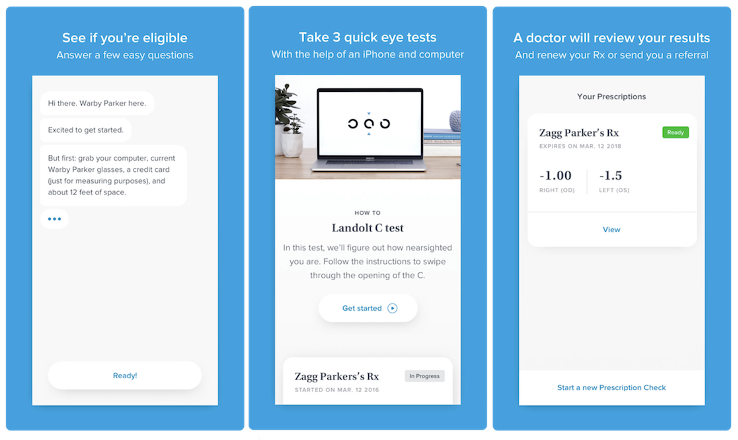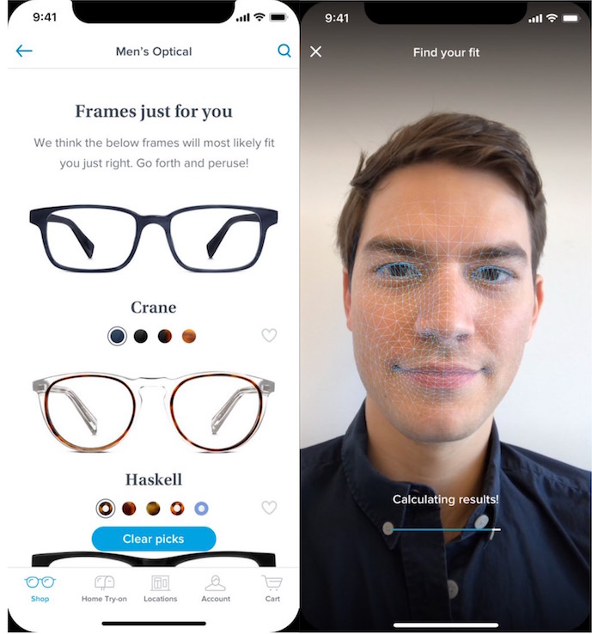What you can learn from Customer King Warby Parker about Customer Experience

Warby Parker is a true master of the customer journey, with flawlessly automated interactions, frictionless experiences combined with warm human interventions. But they are also continuously striving to become a partner in the life of their customers, not just offering great eyeglasses, but little by little, moving into the healthcare space as well, with vision care and eye exams. Last but not least, the “saving the world” approach is deeply etched into their DNA as – from the very beginning – for each pair of glasses that they sell, they offer a pair to those in need through the ‘Buy a pair, give a pair’ program.
In the coming weeks, I’m going to offer more examples of customer experience kings to inspire you with real life examples of companies that lifted themselves to a higher level through the smart use of technology and human talent. This is the first blog in that series, explaining how Warby Parker became one of the most successful companies out there in the area of customer experience.
Get the hierarchy of “whys” right
A company’s “why” and the customer’s “why” are not always the same, but that does not mean that they are not equally important. What is crucial, though, is that you do have them both and that you get the order right. Warby Parker accomplished exactly that.
The founders started their company to solve a real problem: eyeglasses were overpriced while there was nothing in the production to justified this. So they decided to sell glasses online – they were one of the first to do that (though not the first) – and cut out the middle man in order to bring the prices way down.
But they wanted to go further with this simple “glasses on faces” philosophy. Though their price was a lot better than the competition, some people still would not be able to afford them. So, from the get go, they integrated the “Buy a pair, give a pair” into their offering. And that has become the “Why” of the company: it’s the reason why their people get up in the morning. Because, let’s face it, “I help everyone in the world, including those in need, see” is a better reason for that than “I sell cheap glasses”.
But the founders also realized that offering cheap glasses online and donating them to those who cold not afford them, would not suffice to make them successful. It would make customers like them, but not love them. As Neil Blumenthal, co-founder and co-CEO of Warby Parker, puts it: “We wanted to hit the points that would most likely compel people to buy glasses, hence our hierarchy of messaging: fashion first, value second, social mission third.”
The latter is something that I see a lot of companies do wrong: though “saving the world” may be their own personal why, you need a fantastic product, service or experience first if you want to be able to sell enough to make a real impact on the world. Tony’s Chocolonely is a fantastic example of that: great mission, great internal “why” (slave-free chocolate) but above all, they offer an exquisite and unique product to the customer.
Always follow the customer
It’s clear that Warby Parker always puts the customer first, continuously integrating feedback, asking them questions, surveying them and tracking the NPS score with the utmost attention. This “always follow the customer” approach has made them extremely agile and resilient. You can see them constantly adapting and they have done so from the start: founders Jeffrey Raider, Andrew Hunt, Neil Blumenthal and David Gilboa originally set out to build an online only store, but as more and more customers started to ask if there was a place where they could try on the glasses, they realized that they would have to open retail stores as well. And today they have about 100 stores, spread all over the US.
Their offering too, keeps adapting. After regular glasses, they added sunglasses and later versions for children. They also stepped away from standardized models and started to sell models that were adapted to people with more narrow or broader faces. And since the end of 2019, they also started to offer contact lenses under the new brand ‘Scout’, together with prominent competing brands like Acuvue, Alcon and CooperVision, by the way. And recently, as I mentioned, they have been moving into the healthcare industry as well, offering eye exams and vision tests, both online and in some of their stores.
A touch of tech magic
Warby Parker understands like no one the ‘magic’ of technology when it comes to removing friction and offering a better experience. Just to give a few examples, their Prescription Check app allows its customers to renew their prescription for $15 with a laptop, an iPhone, and their current pair of glasses without the need (and price) of visiting an optometrist.
They were also one of the first companies to launch an easy shopping function on Instagram. And, last year, there has also been a lot of buzz around their Virtual Try-On app, that allows people to try on virtual frames through augmented reality with Apple’s Face ID. But, being true pioneers in the online-meets-offline approach, they have also always offered the possibility on their online shops to try 5 “real’ pairs of glasses sent to a customer for free to allow them to test them in the comfort of their own home.
They also provide personal fashion advice with the visual recognition tool ‘Find your fit’ to analyze shoppers’ faces and provide personalized recommendations for glasses that are the best match for a customer’s type of face.
Digital and human always go hand in hand at Warby Parker: in each store, customers are always greeted by a super friendly host with the right tools to help them through the process really easy. Anyone talking to any of the well-informed and well-trained sales associates, can also ask them to look up all of their order history, so that the offline and online experience can merge flawlessly.
Employee first
Though not all customer first companies treat their employees right, it is true that treating your employees well and empowering them does result in better treatment of customers. It should be no surprise that Warby Parker has an employee first policy. As founder Blumenthal explains it: “If you hire smart, friendly people and empower them to make decisions, they’ll always act in the interest of customers. Miserable customer service is usually the result of miserable employees. Great customer service is the result of happy, talented, well-valued employees.”
So the company puts serious resources and energy into hiring the best customer experience associates possible and it empowers them with the tools they need to make customers happy. The company also has a strong focus on lifelong learning: it offers for instance twice-yearly 360-degree reviews as well as management workshops, speaker sessions, book clubs and many more to help its employees evolve. The company’s social “why” – putting “glasses on faces” all over the world – plays an important role in recruiting and retaining talent, too, of course.
It’s clear that Warby Parker understands like no one else how to build a company that lasts, by focusing on multiple sides at once – price, looks, employees and even the world in general – but always getting the order of the chain right: fashion first, value second, social mission third. I hope that some of their magic may rub off on your company too. And do stick around in the comings weeks for more amazing customer experience pioneer stories.


